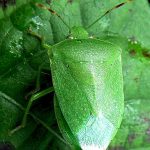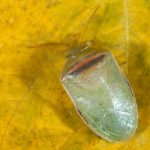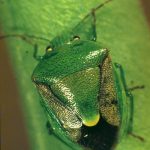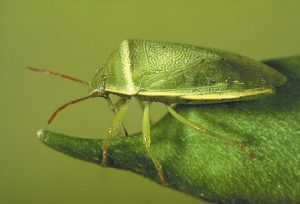
In south east Queensland, females have a red (or pink) transverse band across their ‘shoulders’. In samples collected from Kingaroy and Bundaberg in 2005/06, 95% of females had pink transverse bands, whereas 98% of males had cream transverse bands. In contrast, the majority of female RBSB collected during recent DAF-organised field walks in the Burdekin had cream (not pink) transverse bands, an observation backed up by key local agronomists.
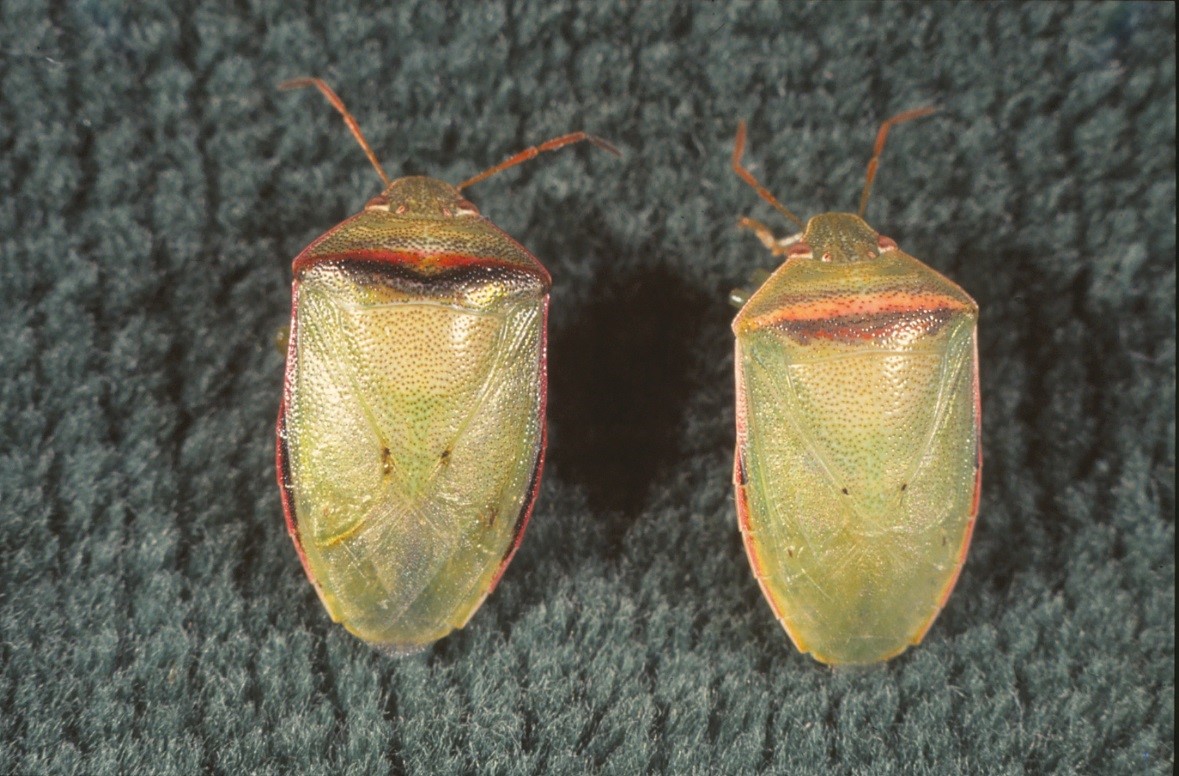
Female redbanded shield bugs showing deep pink (red) transverse band on the left, and paler band on the right.
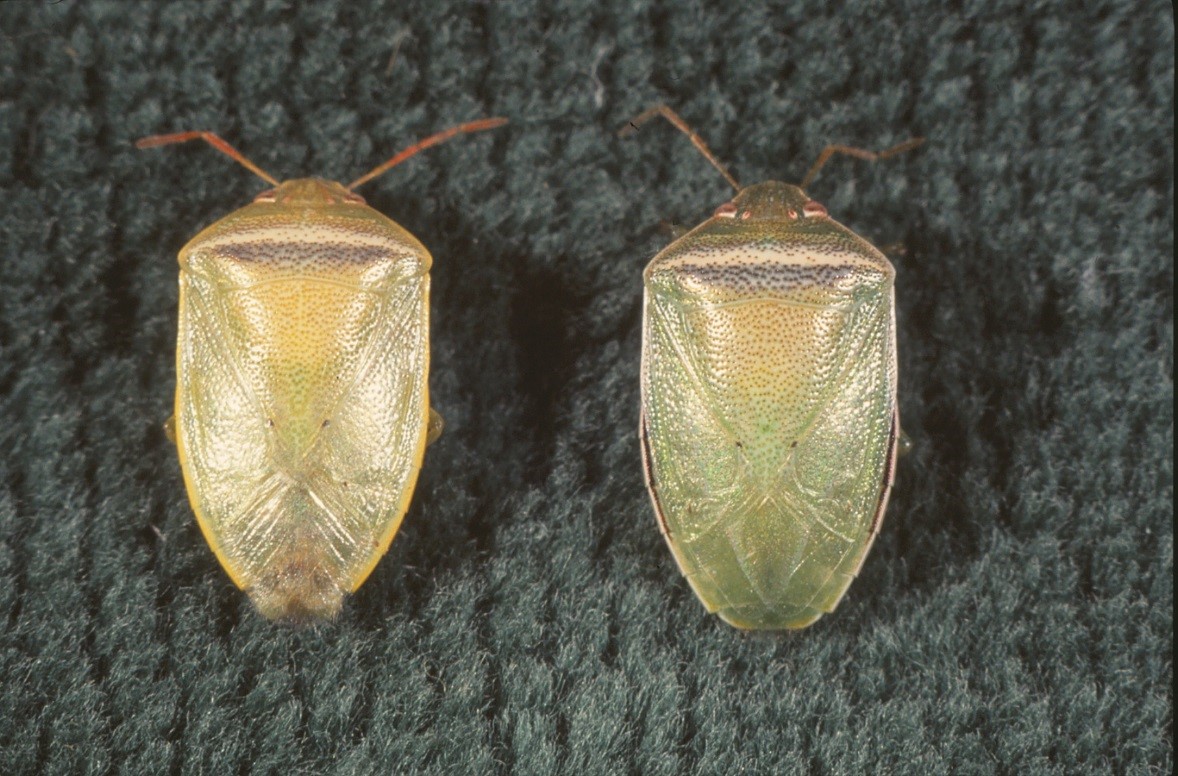
Male (left) and female (right) redbanded shield bugs, both with cream transverse bands. Note the male’s lateral band (around the edges of the wing covers) is yellow, while that of the female is white, with a faint pink tinge. All males but only 2% of females from Kingaroy had yellow lateral bands.

Redbanded shield bug males can be distinguished from females by the tip of their abdominal area when viewed from underneath: male (left) and female (right).
A potential explanation for this difference, based on available data from the South American species Piezodorus guildini, is the colouration of the band may be influenced by the shorter day-lengths that occur in North Queensland (Zerbino et al. 2014, Florida Entomologist, 97(2), 734-734).
The upshot of the paler northern bugs is that RBSBs in some crops may have been misidentified as green vegetable bugs (GVB) (Nezara viridula), and as a consequence, suboptimal spray management decisions may have been made. See below for a diagram and photos of the three species of green shield-shaped podsucking bugs found in pulses. Note that GVB at about 15 mm long (not including antennae) are considerably larger than RBSB (9-10 mm), are a much brighter green and lack transverse banding. Another similar looking species is the green stink bugs (Plautia affinis) which are smaller again (8 mm), and distinguishable by their distinctive dark brown wings.
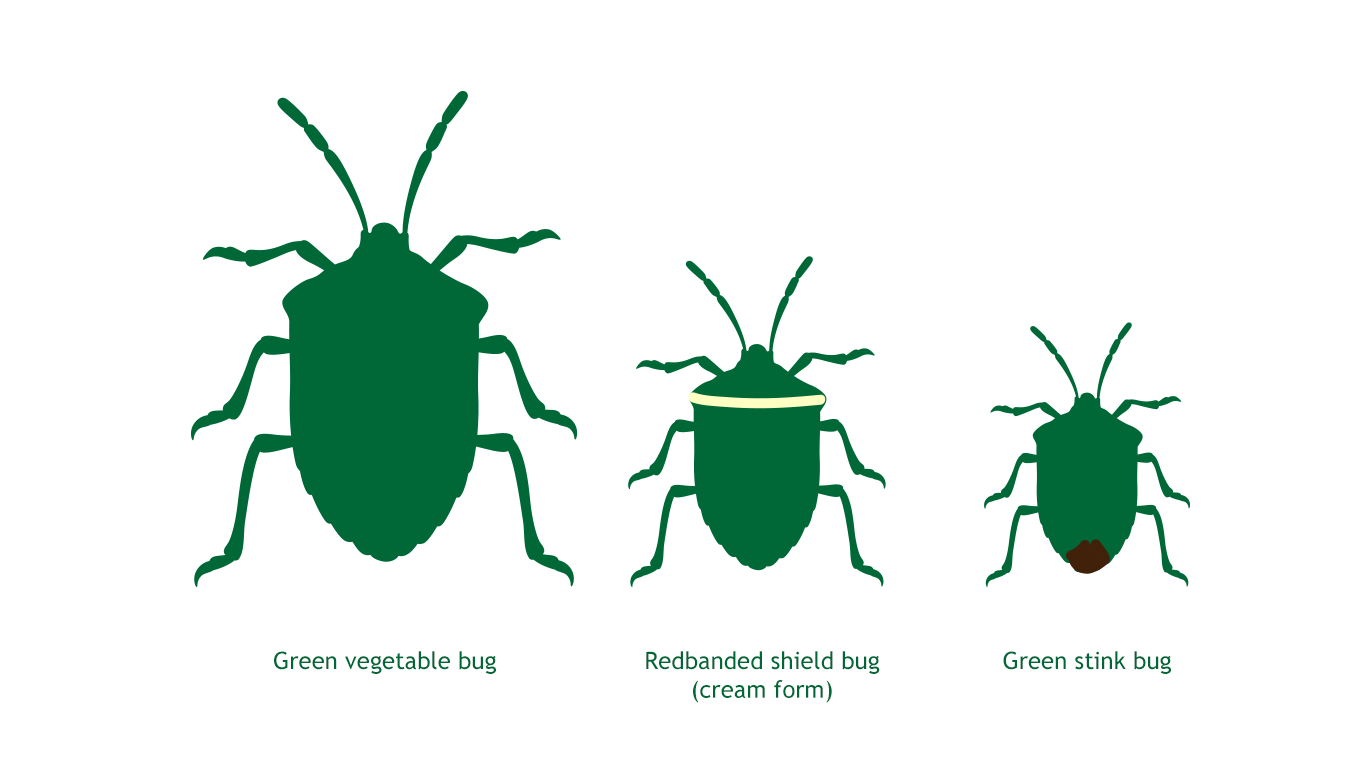
Relative sizes of green podsucking bugs in pulses and their distinguishing markings—the transverse band in RBSB and dark brown wings in green stink bugs.
- Green vegetable bug (15 mm)
- Redbanded shield bug (10 mm)
- Green stink bug (8 mm)
For GVB, the most cost-effective insecticide option is deltamethrin (e.g. Ballistic®) at 500 mL/ha, which has a 7-day withholding period. For RBSB however, the most effective option is clothianidin (Shield®), which can be used under APVMA permit 86221 in soybeans at 250 mL/ha (with the addition of a 2% MAXX Organosilicone surfactant at 2 g/L, and a 0.5% w:v salt (NaCl) adjuvant), and in mungbeans under the same permit at up to 375 mL/ha. Note that Shield® has a 21-day withholding period in both crops.
Brock Dembowski (DAF) and local agronomists are currently collecting adult RBSB to confirm these initial sex-colour observations.
Images of a range of podsucking bug species at different life stages can be found on the Beatsheet.
Article by Hugh Brier and Trevor Volp, DAF

